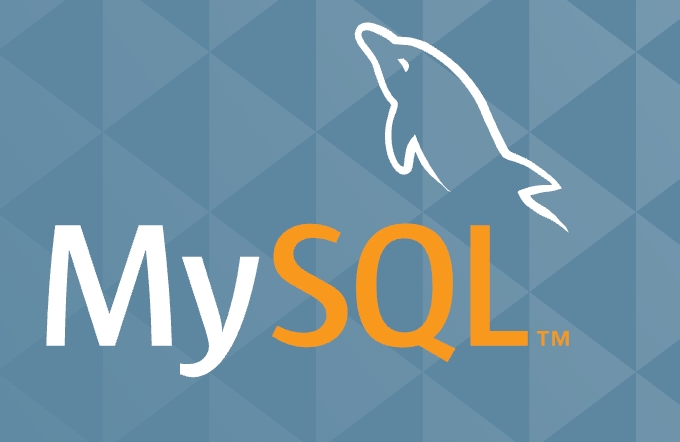Table partitioning is to distribute large tables in multiple physical files according to rules to improve performance. Its importance lies in optimizing queries and simplifying maintenance. When choosing a suitable partition key, you need to consider the data access mode: 1. Priority is used for RANGE partitioning with the time field; 2. Avoid frequent updates of fields; 3. Select hash or list partitions based on common fields for query. Common types include RANGE suitable for dates, LIST for enumeration values, evenly distributed HASH and KEY partitions. During maintenance, partitions need to be added, merged and deleted old data regularly. Note that the partition key should be the primary key part and the query must have a partition key to achieve cropping.

Table Partitioning is a very effective optimization method when processing large data sets in MySQL. It improves query performance and simplifies maintenance operations by logically dividing a large table into multiple smaller parts. However, to do a good job in partition management, the key is to understand the data access pattern and choose the appropriate partitioning strategy.

What is table partitioning? Why is it important?
MySQL table partitioning distributes the data of a large table in multiple physical files according to certain rules. Although it is still a table logically, from the storage level, each partition is independent. This is especially useful for large datasets, as it can:

- Improve query efficiency: only scan related partitions, not the entire table
- Speed ??up archive and deletion operations: just delete the entire partition
- Improve maintainability: such as backing up or re-indexing a partition
However, if the partitioning strategy is unreasonable, it may bring additional overhead and even affect performance.
How to choose the right partition key?
The selection of partition key directly affects the effect of partition. Here are some common suggestions:

- Try to use the time field : If you frequently query the time range, such as log data, use
RANGEorRANGE COLUMNSpartition, using the date as the partition key is a good choice. - Avoid frequent updates : For example, user ID, if changed frequently, will cause records to move between different partitions, increasing I/O and lock competition.
- Consider query mode : If your query is mostly based on a certain field, such as region, category, etc., you can use these fields as the basis for hashing or list partitioning.
For example: You have an order table with millions of new records added every day, and the query is mainly concentrated on the data in recent days. In this case, it is very appropriate to use the order creation time to perform RANGE partitioning.
Common partition types and applicable scenarios
MySQL supports a variety of partitioning methods, each with its own characteristics and scope of application:
RANGE Partition
According to the interval of the value, data in obvious order are suitable, such as dates, numbers, etc. For example, put data before 2023 in one partition, and put data in another partition in 2024.LIST Partition
Grouped by predefined discrete values, suitable for enumerated fields. For example, sales data are divided by province, and each province is allocated a partition.HASH partition
Calculate the partition number based on the hash function, which is suitable for situations where data is desired to be distributed evenly. For example, using user ID as hash partitions can make the data more evenly spread among each partition.KEY Partition
Similar to HASH, but determined by MySQL internal algorithms, all column types except TEXT/BLOB are supported.
?? Note: Once the partition method is specified after the table is created, it cannot be changed at will unless the table is rebuilt. So you have to plan well in the early stage of design.
Partition maintenance and precautions
Partitioning is not a one-time thing and requires regular maintenance and adjustment:
- Add a new partition : In particular, the RANGE partition must be added manually when the data is outside the current partition range.
- Merge/Split Partitions : You can merge or split partitions through
ALTER TABLE ... REORGANIZE PARTITION, but pay attention to data consistency. - Delete old partitions : For historical data, you can directly delete the corresponding partition, which is much more efficient than DELETE operations.
- Monitor partition usage : Use
SHOW CREATE TABLEto view the partition structure, or view the size and number of rows of each partition through an information schema table (such asINFORMATION_SCHEMA.PARTITIONS).
In addition, please note:
- The partition field must be part of the table's primary key (if it is the InnoDB engine)
- The query statement should be equipped with partition keys as much as possible, otherwise the advantage of partitioning cannot be taken advantage of (called "partition cropping")
Let's summarize
Table partitioning is an important tool for optimizing large data scenarios, but the premise is that you must be clear about your query and write mode. Only by choosing the right partition key, reasonably designing the partition structure, and regularly maintaining it can it truly play its role. Don't underestimate this step. Sometimes the performance gap can be several orders of magnitude.
Basically that's it.
The above is the detailed content of Managing table partitioning for large datasets in MySQL. For more information, please follow other related articles on the PHP Chinese website!

Hot AI Tools

Undress AI Tool
Undress images for free

Undresser.AI Undress
AI-powered app for creating realistic nude photos

AI Clothes Remover
Online AI tool for removing clothes from photos.

Clothoff.io
AI clothes remover

Video Face Swap
Swap faces in any video effortlessly with our completely free AI face swap tool!

Hot Article

Hot Tools

Notepad++7.3.1
Easy-to-use and free code editor

SublimeText3 Chinese version
Chinese version, very easy to use

Zend Studio 13.0.1
Powerful PHP integrated development environment

Dreamweaver CS6
Visual web development tools

SublimeText3 Mac version
God-level code editing software (SublimeText3)

Hot Topics
 What is the default username and password for MySQL?
Jun 13, 2025 am 12:34 AM
What is the default username and password for MySQL?
Jun 13, 2025 am 12:34 AM
The default user name of MySQL is usually 'root', but the password varies according to the installation environment; in some Linux distributions, the root account may be authenticated by auth_socket plug-in and cannot log in with the password; when installing tools such as XAMPP or WAMP under Windows, root users usually have no password or use common passwords such as root, mysql, etc.; if you forget the password, you can reset it by stopping the MySQL service, starting in --skip-grant-tables mode, updating the mysql.user table to set a new password and restarting the service; note that the MySQL8.0 version requires additional authentication plug-ins.
 What is GTID (Global Transaction Identifier) and what are its advantages?
Jun 19, 2025 am 01:03 AM
What is GTID (Global Transaction Identifier) and what are its advantages?
Jun 19, 2025 am 01:03 AM
GTID (Global Transaction Identifier) ??solves the complexity of replication and failover in MySQL databases by assigning a unique identity to each transaction. 1. It simplifies replication management, automatically handles log files and locations, allowing slave servers to request transactions based on the last executed GTID. 2. Ensure consistency across servers, ensure that each transaction is applied only once on each server, and avoid data inconsistency. 3. Improve troubleshooting efficiency. GTID includes server UUID and serial number, which is convenient for tracking transaction flow and accurately locate problems. These three core advantages make MySQL replication more robust and easy to manage, significantly improving system reliability and data integrity.
 How to change or reset the MySQL root user password?
Jun 13, 2025 am 12:33 AM
How to change or reset the MySQL root user password?
Jun 13, 2025 am 12:33 AM
There are three ways to modify or reset MySQLroot user password: 1. Use the ALTERUSER command to modify existing passwords, and execute the corresponding statement after logging in; 2. If you forget your password, you need to stop the service and start it in --skip-grant-tables mode before modifying; 3. The mysqladmin command can be used to modify it directly by modifying it. Each method is suitable for different scenarios and the operation sequence must not be messed up. After the modification is completed, verification must be made and permission protection must be paid attention to.
 What is a typical process for MySQL master failover?
Jun 19, 2025 am 01:06 AM
What is a typical process for MySQL master failover?
Jun 19, 2025 am 01:06 AM
MySQL main library failover mainly includes four steps. 1. Fault detection: Regularly check the main library process, connection status and simple query to determine whether it is downtime, set up a retry mechanism to avoid misjudgment, and can use tools such as MHA, Orchestrator or Keepalived to assist in detection; 2. Select the new main library: select the most suitable slave library to replace it according to the data synchronization progress (Seconds_Behind_Master), binlog data integrity, network delay and load conditions, and perform data compensation or manual intervention if necessary; 3. Switch topology: Point other slave libraries to the new master library, execute RESETMASTER or enable GTID, update the VIP, DNS or proxy configuration to
 How to connect to a MySQL database using the command line?
Jun 19, 2025 am 01:05 AM
How to connect to a MySQL database using the command line?
Jun 19, 2025 am 01:05 AM
The steps to connect to the MySQL database are as follows: 1. Use the basic command format mysql-u username-p-h host address to connect, enter the username and password to log in; 2. If you need to directly enter the specified database, you can add the database name after the command, such as mysql-uroot-pmyproject; 3. If the port is not the default 3306, you need to add the -P parameter to specify the port number, such as mysql-uroot-p-h192.168.1.100-P3307; In addition, if you encounter a password error, you can re-enter it. If the connection fails, check the network, firewall or permission settings. If the client is missing, you can install mysql-client on Linux through the package manager. Master these commands
 How does InnoDB implement Repeatable Read isolation level?
Jun 14, 2025 am 12:33 AM
How does InnoDB implement Repeatable Read isolation level?
Jun 14, 2025 am 12:33 AM
InnoDB implements repeatable reads through MVCC and gap lock. MVCC realizes consistent reading through snapshots, and the transaction query results remain unchanged after multiple transactions; gap lock prevents other transactions from inserting data and avoids phantom reading. For example, transaction A first query gets a value of 100, transaction B is modified to 200 and submitted, A is still 100 in query again; and when performing scope query, gap lock prevents other transactions from inserting records. In addition, non-unique index scans may add gap locks by default, and primary key or unique index equivalent queries may not be added, and gap locks can be cancelled by reducing isolation levels or explicit lock control.
 How to alter a large table without locking it (Online DDL)?
Jun 14, 2025 am 12:36 AM
How to alter a large table without locking it (Online DDL)?
Jun 14, 2025 am 12:36 AM
Toalteralargeproductiontablewithoutlonglocks,useonlineDDLtechniques.1)IdentifyifyourALTERoperationisfast(e.g.,adding/droppingcolumns,modifyingNULL/NOTNULL)orslow(e.g.,changingdatatypes,reorderingcolumns,addingindexesonlargedata).2)Usedatabase-specifi
 What are the transaction isolation levels in MySQL, and which is the default?
Jun 23, 2025 pm 03:05 PM
What are the transaction isolation levels in MySQL, and which is the default?
Jun 23, 2025 pm 03:05 PM
MySQL's default transaction isolation level is RepeatableRead, which prevents dirty reads and non-repeatable reads through MVCC and gap locks, and avoids phantom reading in most cases; other major levels include read uncommitted (ReadUncommitted), allowing dirty reads but the fastest performance, 1. Read Committed (ReadCommitted) ensures that the submitted data is read but may encounter non-repeatable reads and phantom readings, 2. RepeatableRead default level ensures that multiple reads within the transaction are consistent, 3. Serialization (Serializable) the highest level, prevents other transactions from modifying data through locks, ensuring data integrity but sacrificing performance;






